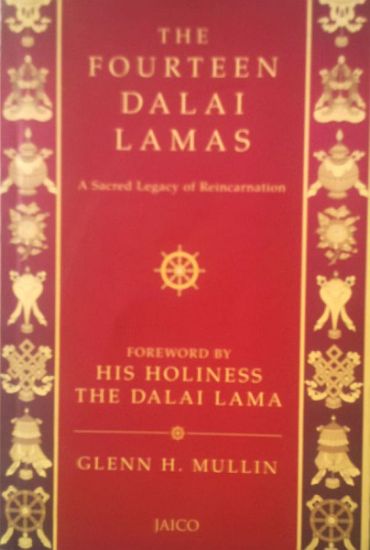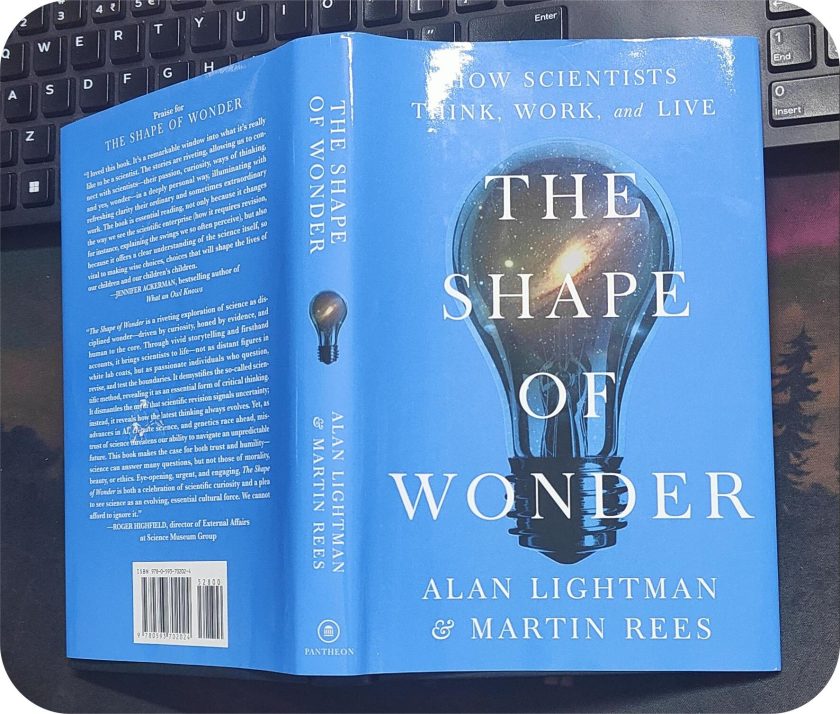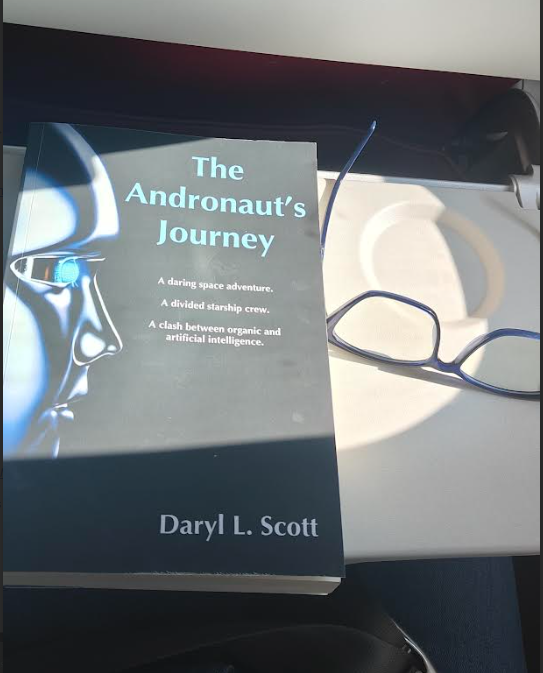The Fourteen Dalai Lamas: A Sacred Legacy of Reincarnation by Glenn H. Mullin takes us back into the Tibetan history soaked up with their culture and times during the wars within and pressure from the outside of the country. It is not a fast read, after all, we are peeping at the history of Tibet, which of course would take time and imagination to witness the era. The work can be considered as a collarge depicting the lives and times of Dalai Lamas.
The book starts with an introduction of Atiśa, who was born in West Bengal, India but later relocated to Tibet. He is the key figure in disseminating Mahayana and Vajrayana Buddhism in Asia during the 11th century. He was the founder of many temples, monasteries in India, Nepal and Tibet. Lama Drom Tonpa, who had passed 36 previous lives, was his chief disciple. He was also considered as an incarnation of bodhisattva Avalokiteshvara. Ngok Lekpai Sherab became the young disciple of both of them.
Mullin gave a brief introduction of various rulers of Yarlung Dynasty who played some part in proliferation of Tibetan Buddhism. Some of them were:
- King Nyatri Tsenpo – As per the legends, he was the progenitor of Yarlung Dynasty.
- King Lha Thothori Nyantsen
- King Songtsen Gampo – He pioneered the spirit of written tradition than oral, which had been existing since the beginning.
- King Trisong Detsen – He invited Guru Padma Sambhava from India to Tibet in order to subdue negative forces evoked by his ex-minister Mazhang.
- King Tri Ralpachen- One of the ardent follower of Buddhism, he built one thousand temples in reverence to Buddha. He invited scholars like Surendrabodhi, Shilendrabodhi and Danashila from India.
Author then starts with the history of first Dalai Lama, Gyalwa Gendun Drup (1391–1474). He was the founder of Tashi Lhunpo and great monastery in Tsang.
Second Dalai Lama, Gyalwa Gendun Gyatso (1475–1542). At the age of fifty, he became the head lama of both Drepung and Sera and continued to oversee Chokhor Gyal and Tashi Lhunpo monasteries.
Third Dalai Lama, Gyalwa Sonam Gyatso (1543–1588). He established Buddhism in Mongolia. This was the second contact of Buddhism with Mongolia, first was held in 13th century by Sakya Pandita and Sakya Pakpa. It was believed by Sakya Pakpa was re-incarnated as Gyalwa Sonam Gyatso. In 1580, he established monastery at Litang in Kham (East Tibet), the birthplace of seventh Dalai Lama.
Fourth Dalai Lama, Gyalwa Yonten Gyatso (1589–1617). He was born in Mongolia and was great-grandson of Altan Khan of the Tümed Mongols. However, as per the state oracle of Tibet, he was relocated to Tibet at the age of 10. There was uproar within the country as majority of Tibetans did not recognize him. In one such attack, he was force to flee to save his life. Reasons for his death weren’t clear, some said he was poisoned however, no such evidence was found.
Fifth Dalai Lama, Gyalwa Ngawang Lobsang Gyatso (1617–1682). He was one of the most distinguished amongst all. He initiated construction of Potala in 1645. He built national medical college in Lhasa on Iron Mountain. It was during his reign, door-to-door population census was conducted. He instituted system of taxation for supporting education, health, temples and environment.
Sixth Dalai Lama, Gyalwa Tsangyang Gyatso (1683–1706). Although he was of high intelligence but some factions never considered him the Lama because of his playboy lifestyle. As per legends, he was murdered near Qinghai. In his lifetime he composed many love poems, that have gained significant popularity during and after his reign in and abroad Tibet, including China.
Seventh Dalai Lama, Gyalwa Kelzang Gyatso (1707–1757). He was amongst the most revered of all. He was an inculcation of profound wisdom and could compose verse on the fly. He founded the Tse-School in the Potala Palace during 1753 and constructed the Norling Kalsang Phodrang Palace at the Norbulingka.
Eight Dalai Lama, Gyalwa Jamphel Gyatso (1758–1804). He built the Norbulingka Park and Summer Palace on the outer parts of Lhasa during 1783. He put in an order for construction of a Buddha statue in southern region of Tibet. During the 1960s, the same statuette was imported to India and currently it is present at the Library of Tibetan Works & Archives, Dharamsala, India.
Ninth Dalai Lama, Gyalwa Lungtok Gyatso (1805–1815). He was perhaps the only Dalai Lama who died while still in childhood, that is at the tender age of 10. At the age of nine, he was caught with common cold, which consequently took his life. His body has been placed within a golden reliquary at Potala Palace.
Tenth Dalai Lama, Gyalwa Tsultrim Gyatso (1816–1837). He not only mastered sutra and tantra but he extensively studied Tibetan Buddhist texts. He reconstructed the Potala Palace at the age of 15, during 1831. He wanted to revamp the entire economic structure of Tibet but unfortunately, due to his poor health he didn’t survive long and died at the age of 21.
Eleventh Dalai Lama, Gyalwa Khendrup Gyatso (1838–1856). Like the previous two Dalai Lamas, he too didn’t live long and died at the age of 18. He is famous for his book of stanzas, which is an allegorical representation of 18th century war between the Tibetans and the Gurkhas, named, Story of the Monkeys and Birds (Bya sprel gyi gtam-rgyud).
Twelfth Dalai Lama, Gyalwa Trinley Gyatso (1857–1875). His era is marked with political turbulence and conflicts amongst Tibet’s neighbors. Major portion of unrest was due to the wars that Britain was fighting against Sikkim, an Indian state and Bhutan via Lhasa. His effort to control the entire Tibet during the times went in vain, as he suffered from mysterious illness that took his death. He was 18 then.
Thirteen Dalai Lama, Gyalwa Thubten Gyatso (1876–1933). He was looked upon for reforming the society, which was in turmoil due to the wars. He played a constructive role as a politician in The Great Game between the Russian Empire and the British Empire. Very deftly, he restored discipline in monastic life. In order to avoid concentrated power at the hands of monks, he increased the number of officials for equal distribution of authority.
Fourteen Dalai Lama, Gyalwa Tenzin Gyatso (1935). He is the current Dalai Lama and has earned 1989 Nobel Peace Prize. During 1959, when a revolt erupted in Lhasa under Communist Party of China, he fled to India, where he declared his abandonment to the People’s Republic and formed the nongovernmental Central Tibetan Administration. Since then he has been travelling across the globe, advocating Tibetans’ welfare, educating people about Tibetan Buddhism and advocating a life full of compassion. Although countries andf institutions around the world face pressure from China for not accepting him however, he is looking forward to make Tibet a free country and not under the control of the People’s Republic of China.
Mullin has been successful in steeping into the mysticism and culture of foreign tradition in bringing out the Dalai Lamas’ stories in one of the most convincing and interesting manner.




